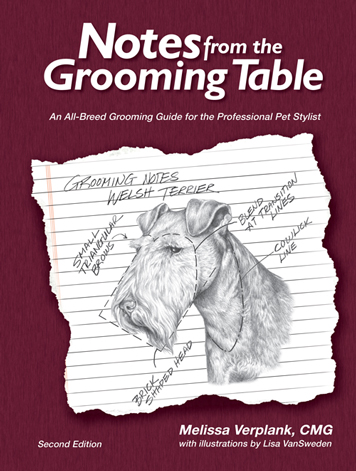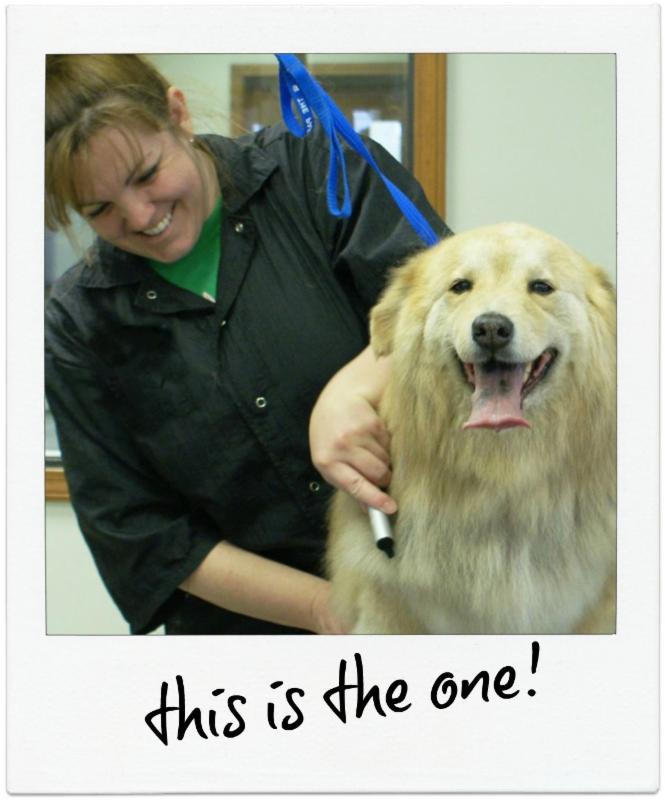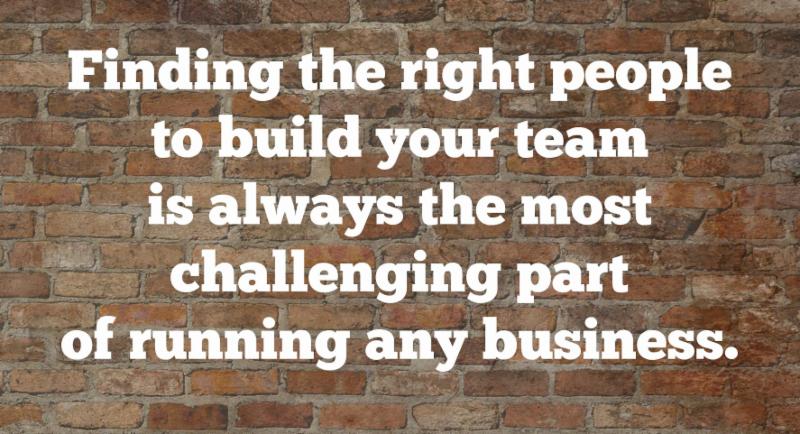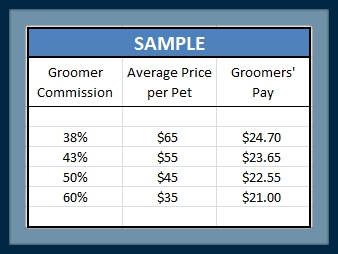 If your local TV news station were to drop by – unannounced – to do a story about you and your business, would you be prepared? What about your local newspaper? Could you make a great impression to the community as they interview you with cameras flashing? Would you be proud of your shop? Your staff? Yourself?
If your local TV news station were to drop by – unannounced – to do a story about you and your business, would you be prepared? What about your local newspaper? Could you make a great impression to the community as they interview you with cameras flashing? Would you be proud of your shop? Your staff? Yourself?
Impressions are made in an instant. It doesn’t matter whether it is a TV news crew, reporter, or client. If you are open for business, you need to be prepared to be splashed across the screen or featured on the front page of your local newspaper.
Be honest. Can you proudly flaunt your business, even if the local media showed up without notice?
If you shudder at the thought, you need to take the steps necessary to create a professional image. You want to create a lasting, positive impression on your clients – and prospective clients.
It takes less than 30 seconds for people to form an opinion about you and your business. Don’t forget, we’re not just talking about what the client sees, but what they smell and hear.
I’ve been in this industry over 30 years with multiple businesses and this has happened many times. If there is a slow news day, nothing can fill the space better than our furry friends! I make sure that my companies understand that cleanliness and professional appearance are a top priority. They need to be prepared and ready to be front page news – at all times. You never know when an opportunity to shine will present itself.
As pet care ambassadors, it our job to groom pets but also our job to present a professional image for our industry. We cannot afford to look like we just rolled out of bed. Take a moment each day to put yourself together so that you would be proud to be featured in your local media.

Which side looks more professional?
I don’t know any successful person who doesn’t sweat the details. Being impeccable, both personally and in your work space, shows the client that you care about yourself. The message you are sending out is that you are confident with your skills. That you are successful. That you respect yourself enough to do the same for them – and for their pet. It also shows that you care about your client.
I know it can get tiring to dress up a little every day. However, our clients are entrusting us with the care of their pets. Like it or hate it, you can easily influence their trust by simply changing the way you look when you greet your clients. Think of yourself as your own brand. Don’t you want your product to be consistent and look great? Of course! And your clients are looking for that, too.
A neat, well-groomed appearance is essential when it comes to professionalism in this industry. You need to dress in a way that attracts clientele.
Come to work each day looking crisp, clean, and pulled together. Blue jeans, sweat pants, and athletic shorts ARE NOT professional attire! They don’t inspire confidence. Black, white, or khaki slacks work well. Longer skirts are great for women in warmer climates. Conservative shorts or Capri’s may work for your environment, as well. Matching grooming pants are also nice. I’ve even seen dressy leggings work when paired with an over-sized, long, top or smock. Look for clothing that is not prone to wrinkling or be prepared to learn how to iron!
Today, there are many options for hair-repelling garments. There are all types of tops and bottoms in a wide variety of styles. If you work in a salon with a dress code, this may be easier. If not, have some fun with the pet styling fashions that are available. It may even be a good idea to keep an extra outfit or smock around the shop as a back-up. If you get drenched or messy, a quick change will instantly boost your comfort level and mood.
Consider the color of your outfit, as well. If your logo is blue, you may want to consider this your brand color and wear it everyday. It will make you instantly recognizable to your clients.
Remember, low-cut tops and short-shorts are never appropriate. If you have shorts that are too short or a top that is too revealing (especially when you are squatting down to pick up a dog), it just doesn’t look professional. Muscle shirts and shirts with the sleeves cut off don’t make the grade, either.
Being professional means speaking, behaving, and dressing in a manner that tells people you are qualified to do the job. If your appearance causes anyone to doubt – even for a second – that you don’t know what you’re doing, you could lose their business before they even see your work.
 Proper hygiene is also crucial. It should go unsaid, but being clean and odor-free is a must. There is nothing more offensive – and embarrassing – than personal body odor. The famous motivational speaker Zig Ziglar, noted, “People often say that motivation doesn’t last. Well, neither does bathing – that’s why we recommend it daily.” Nothing could be more true!
Proper hygiene is also crucial. It should go unsaid, but being clean and odor-free is a must. There is nothing more offensive – and embarrassing – than personal body odor. The famous motivational speaker Zig Ziglar, noted, “People often say that motivation doesn’t last. Well, neither does bathing – that’s why we recommend it daily.” Nothing could be more true!
Your own hair needs to be clean and neatly styled. If your hair is long, tie it back and away from your face. As your work with clippers or shears, you don’t want to be trimming a lock of your own hair as you scissor that leg. I hate to think of how many people with long hair have caught their tresses in the spinning grinder as they worked. Ouch! Or worse yet, drag it through anal gland expressions, defecation, or urine.
Having a touch of jewelry is a nice finishing touch. Done well, it always reflects positively. However, just like with fragrance – go light. A few simple rings. A durable watch (and you always need to know the time!!). If your ears are pierced – stick with super simple earrings – something a dog can’t accidentally catch in a paw, ripping your ear lobe. If you opt for a necklace, keep it tasteful. Don’t be in love with it. Dogs will catch it in their paws and break it, eventually. The same thing with is true with bracelets.
Having well-groomed fingernails is what I consider a bonus. Working with dirty dogs and trimming toenails lends itself to dirty fingernails – even if you do a lot of bathing. Trimming Poodle feet has a tendency chip fingernails. Personally, I liked to keep my nails painted. Painted fingernails will hide all sorts of flaws. Unfortunately, when you do a lot of bathing, standard nail polish has a tendency to peel off quickly – sometimes in as little as one day. My solution was to have my fingernails professionally done every two weeks. Both acrylic and shellac nail applications seem hold up well to the abuse groomers put their hands through. Ragged nails on women or men can be easily tidied up. When you give the pet to the owner, their eyes are naturally drawn to your fingers as you hand over the leash. Wouldn’t filed nails make a great impression? Plus, it gives you a little time to pamper your most valuable asset – YOUR HANDS!
Pay attention to the details. Judy Hudson is one our popular Learn2GroomDogs.com Training Partners. In her video, What I Know For Sure, she shares this tip: “It doesn’t cost a lot to be clean. It doesn’t cost a lot of money to be neat and tidy. All it takes is a little elbow grease.”
The next time your local news company calls for an interview, you’re going to have the confidence to greet them at the door even if you only have a few moments notice before they arrive. When your image is splashed across the TV screen, you’re going to be proud of what you see – and your clients and prospective clients will be impressed.
There is no amount of marketing dollars that can buy free publicity. Are you ready for the media to show up on YOUR doorstep?
Happy Trimming!
~ Melissa
>P.S.
You never know when the media will knock on your door! Has this ever happened to you? Go online and tell us about it on the Learn2GroomDogs Facebook page.
 This is the time of year the big shedding breeds come in. They’re often the ones that haven’t been groomed in FOREVER. You know the ones – Goldens…arctic-type breeds…Saint Bernards. They have that coat that totally trashes your salon – and maybe even you. There are tricks to getting this type of job done without too much agony. For anyone who’s missed this blog in the past – it’s a perfect time to revisit my blog on salvage work.
This is the time of year the big shedding breeds come in. They’re often the ones that haven’t been groomed in FOREVER. You know the ones – Goldens…arctic-type breeds…Saint Bernards. They have that coat that totally trashes your salon – and maybe even you. There are tricks to getting this type of job done without too much agony. For anyone who’s missed this blog in the past – it’s a perfect time to revisit my blog on salvage work.

 Weigh out the risks. Whenever you need to decline service to a client, it’s an uncomfortable situation. But the alternative is much, much worse. Telling an owner their pet has been seriously hurt or died in your salon it the most difficult task you will have to address. You want to avoid that at all costs – even if it makes the client angry or upset.
Weigh out the risks. Whenever you need to decline service to a client, it’s an uncomfortable situation. But the alternative is much, much worse. Telling an owner their pet has been seriously hurt or died in your salon it the most difficult task you will have to address. You want to avoid that at all costs – even if it makes the client angry or upset.



 Grooming systems allow us to go on autopilot. When we’re on autopilot, we can focus on the thing that matters the most – pets!
Grooming systems allow us to go on autopilot. When we’re on autopilot, we can focus on the thing that matters the most – pets! Here’s my basic grooming routine on all my six-week or less clients who get a fuller styled leg trim.
Here’s my basic grooming routine on all my six-week or less clients who get a fuller styled leg trim. Legs:
Legs:  The rear leg will be the same (with a few variances) to help establish the angles of the rear assembly. When doing the guard comb work, I sweep the clipper over the hip and rump area and feather off towards the stifle. This helps establish the angulation on the rear leg.
The rear leg will be the same (with a few variances) to help establish the angles of the rear assembly. When doing the guard comb work, I sweep the clipper over the hip and rump area and feather off towards the stifle. This helps establish the angulation on the rear leg.
 Did you know about half of all small businesses fail within the first four years? It’s a scary statistic, but fortunately, you’re not one of the fallen. Your books are full. You’re grooming steadily all day long. The phones are ringing off the hook – it’s a dream come true, right?
Did you know about half of all small businesses fail within the first four years? It’s a scary statistic, but fortunately, you’re not one of the fallen. Your books are full. You’re grooming steadily all day long. The phones are ringing off the hook – it’s a dream come true, right? This is an age-old problem. I don’t know of a single successful grooming business that has not faced this dilemma at some point.
This is an age-old problem. I don’t know of a single successful grooming business that has not faced this dilemma at some point. Delegate anything you can to assist with the smooth running of your business – or your home – which is not directly related to grooming.
Delegate anything you can to assist with the smooth running of your business – or your home – which is not directly related to grooming.

 One my companies, Whiskers Resort and Pet Spa, is phenomenal at impressing people which in turn gets them talking. We do virtually zero paid advertising. Instead, we focus on those four key elements listed above; delighting our customers, being interesting, earning our clients’ trust, and making it easy for them to talk about us.
One my companies, Whiskers Resort and Pet Spa, is phenomenal at impressing people which in turn gets them talking. We do virtually zero paid advertising. Instead, we focus on those four key elements listed above; delighting our customers, being interesting, earning our clients’ trust, and making it easy for them to talk about us. Here is another way to foster word of mouth marketing. Photos and events. Over the years, the Whiskers team has hosted many special events for both our overnight guests and doggie daycare clients. The entire goal for these events it to get people talking in the community. The parties are promoted through our monthly client newsletter and Facebook page. It works.
Here is another way to foster word of mouth marketing. Photos and events. Over the years, the Whiskers team has hosted many special events for both our overnight guests and doggie daycare clients. The entire goal for these events it to get people talking in the community. The parties are promoted through our monthly client newsletter and Facebook page. It works. These are just a few ideas to help you get folks talking about you. There are thousands of ways to get the ball rolling – it just takes a little forethought and creativity on your part.
These are just a few ideas to help you get folks talking about you. There are thousands of ways to get the ball rolling – it just takes a little forethought and creativity on your part.

 Proper hygiene is also crucial. It should go unsaid, but being clean and odor-free is a must. There is nothing more offensive – and embarrassing – than personal body odor. The famous motivational speaker Zig Ziglar, noted, “People often say that motivation doesn’t last. Well, neither does bathing – that’s why we recommend it daily.” Nothing could be more true!
Proper hygiene is also crucial. It should go unsaid, but being clean and odor-free is a must. There is nothing more offensive – and embarrassing – than personal body odor. The famous motivational speaker Zig Ziglar, noted, “People often say that motivation doesn’t last. Well, neither does bathing – that’s why we recommend it daily.” Nothing could be more true! Let’s take a little poll:
Let’s take a little poll: “I’ve grown a lot by working here.”
“I’ve grown a lot by working here.” If yours is like most grooming salons, it’s next to impossible to hire the ready-made job applicant. It’s rare to find that person who will be everything you need, right away. Even if you do find great candidates, it’s still going to take work to bring them up to speed. To bring them in line with the way YOU do things in your business. To teach them your culture.
If yours is like most grooming salons, it’s next to impossible to hire the ready-made job applicant. It’s rare to find that person who will be everything you need, right away. Even if you do find great candidates, it’s still going to take work to bring them up to speed. To bring them in line with the way YOU do things in your business. To teach them your culture. Observe how they work. Even with the most basic tasks like answering phones or washing dogs, many new hires need to be gently coached. Even if their skill level is weak, if they have the right attitude, you will be able to train them quickly. But you have to understand where they are in their current level of training. And the only way to learn that is by having them demonstrate their work.
Observe how they work. Even with the most basic tasks like answering phones or washing dogs, many new hires need to be gently coached. Even if their skill level is weak, if they have the right attitude, you will be able to train them quickly. But you have to understand where they are in their current level of training. And the only way to learn that is by having them demonstrate their work. If you’re going to work 2000+ hours per year, don’t you want to be doing something you are passionate about? In a place you enjoy? To be respected? Treated fairly? Providing a valuable service to clients? Of course you do. That’s what we all want.
If you’re going to work 2000+ hours per year, don’t you want to be doing something you are passionate about? In a place you enjoy? To be respected? Treated fairly? Providing a valuable service to clients? Of course you do. That’s what we all want. Goals & Standards
Goals & Standards